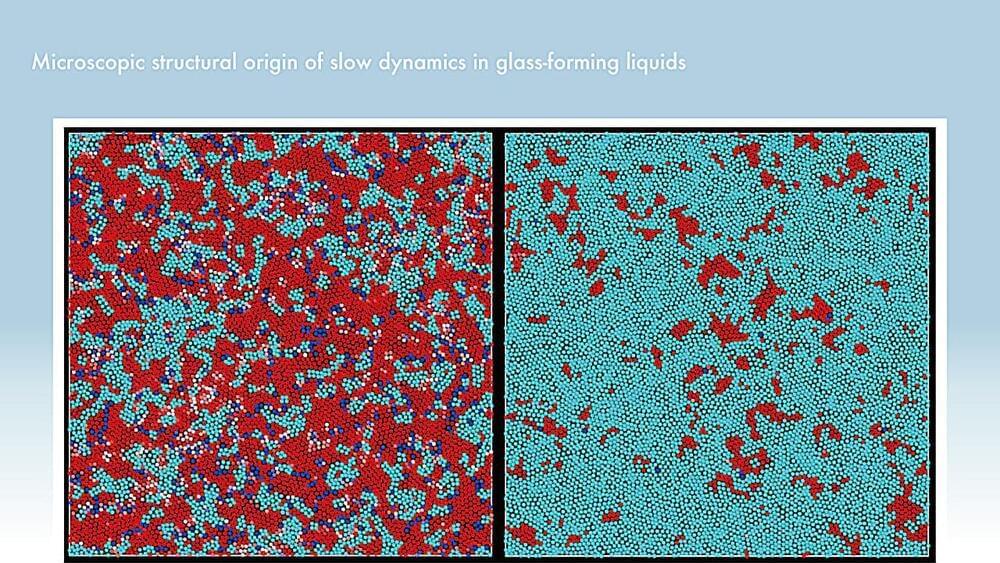Glass might seem to be an ordinary material we encounter every day, but the physics at play inside are actually quite complex and still not completely understood by scientists. Some panes of glass, such as the stained-glass windows in many medieval buildings, have remained rigid for centuries, as their constituent molecules are perpetually frozen in a state of disorder.
Similarly, supercooled liquids are not quite solid, in the sense that their fundamental particles do not stick to a lattice pattern with long-range order, but they are also not ordinary liquids, because the particles also lack the energy to move freely. More research is required to reveal the physics of these complex systems.
In a study published in Nature Materials, researchers from the Institute of Industrial Science, the University of Tokyo have used advanced computer simulations to model the behavior of fundamental particles in a glassy supercooled liquid. Their approach was based on the concept of the Arrhenius activation energy, which is the energy barrier a process must overcome to proceed.
